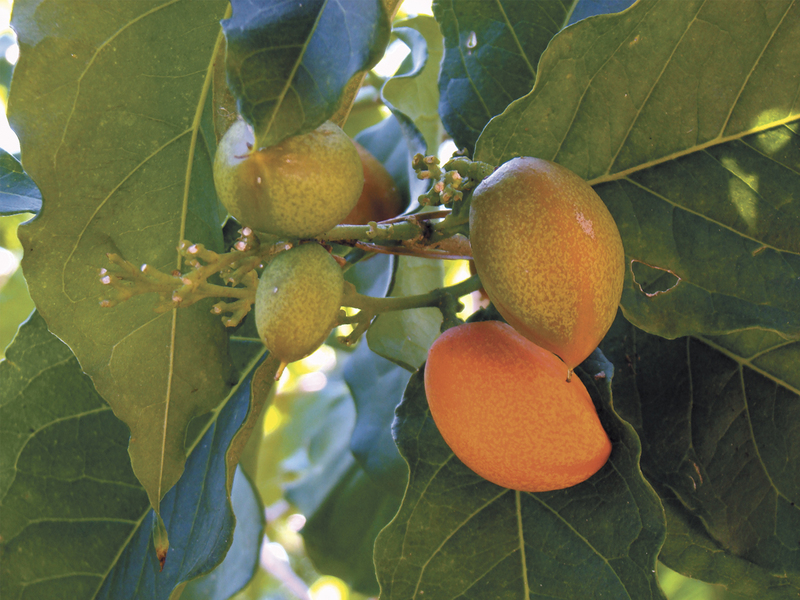Men prefer it crunchy, women and children prefer it smooth. The East Coast likes it smooth and the West Coast prefers crunchy. Even though it is thought of as a kid’s snack, adults actually eat more of it than kids. It is peanut butter, perhaps the greatest endemic American snack, and there is a plant whose fruit smells just like peanut butter! The aptly named Peanut Butter Fruit (Bunchosia argentea) from Colombia and Venezuela blooms from March through October with sprays of bright yellow flowers that form red ripe one inch oval fruits whose large seeds are surrounded by sweet, sticky soft pulp. The flavor is one that makes you think of dried figs covered with peanut butter. Besides eating out of hand you can make the fruits into unusual jams and jellies.
Best of all, they can easily be grown indoors anywhere. Hardy only to USDA zone 10, they do fine indoors in full sun in a 10- or 12-inch pot. They will eventually reach three feet tall indoors.
As with any indoor fruiting plant, give them a good balanced organic fertilizer when they are actively growing. About the only pests that attack Peanut Butter Fruit are spider mites and aphids; both can be eliminated by wiping with alcohol.
The evergreen leaves are ornamental even when the plants aren’t in bloom. Plant your Peanut Butter Fruit in a pot that is about 20 inches deep so the roots aren’t crowded. Choose a well-draining potting soil to prevent the roots from rotting. You can add sand or perlite to the soil to help drainage.
Place Peanut Butter Fruit plants in a sunny window. A south-facing spot in your home will give your tree the chance to produce the most fruit. If need be, add grow lights. After all danger of frost is gone you can move the plants outdoors into direct sun. Since they are tropical they will thrive on 12 hours of bright sun or more each day.
Water your plants by lightly soaking the soil and letting it drain completely. Only water when the top two inches of soil are dry. Never give them too much water.
You can buy Peanut Butter Fruit trees (Bunchosia argentea) by special order from local garden centers and nurseries or by mail from specialty nurseries such as Logee’s (141 North St, Danielson, CT 06239; phone: 888-330-8038, online at www.logees.com) or Real Flora (www.realflora.com).
Plant these fast-growing trees and within a year or two you can enjoy fruits with the essence of peanut butter and avoid the dread of Archibutyrophobia, the fear of getting peanut butter stuck to the roof of your mouth.




















































